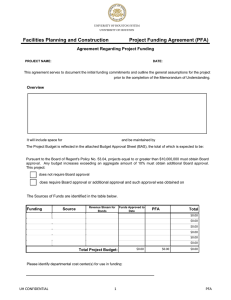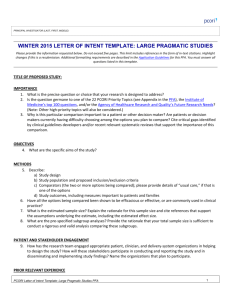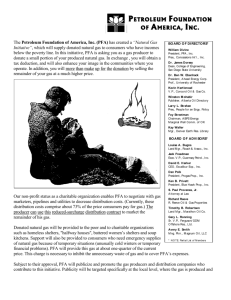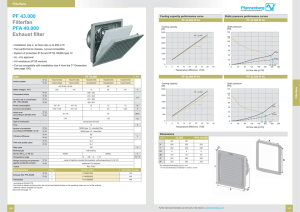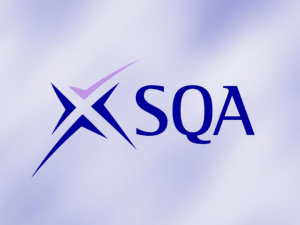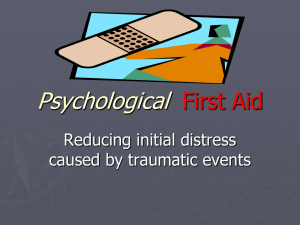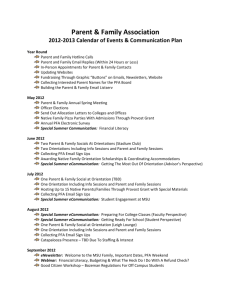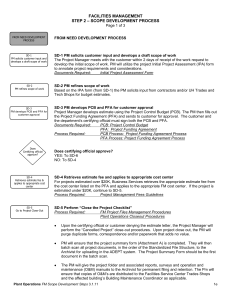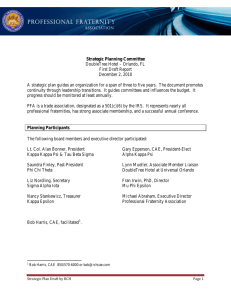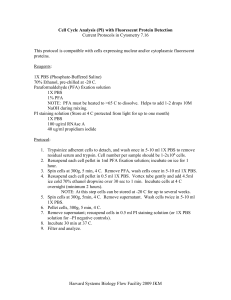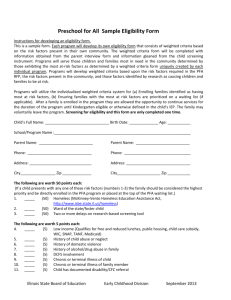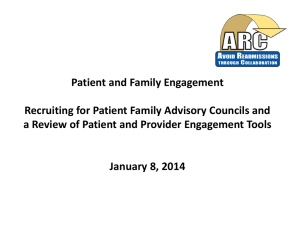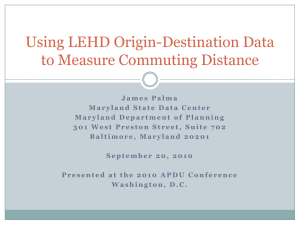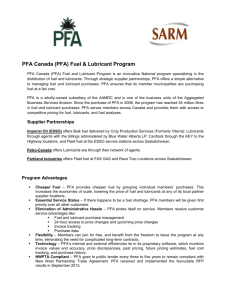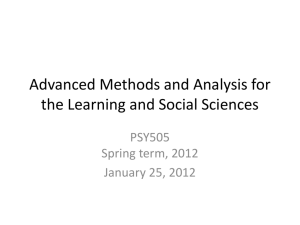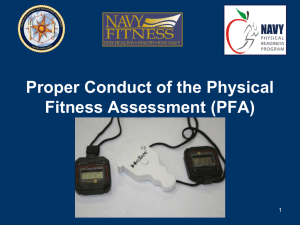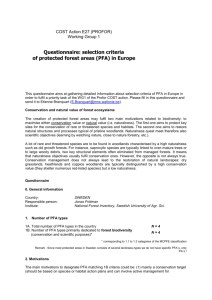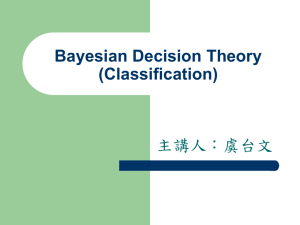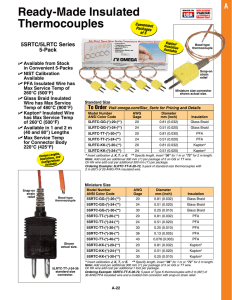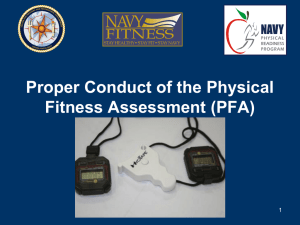Some notes on Possible World Semantics, Time, and
advertisement
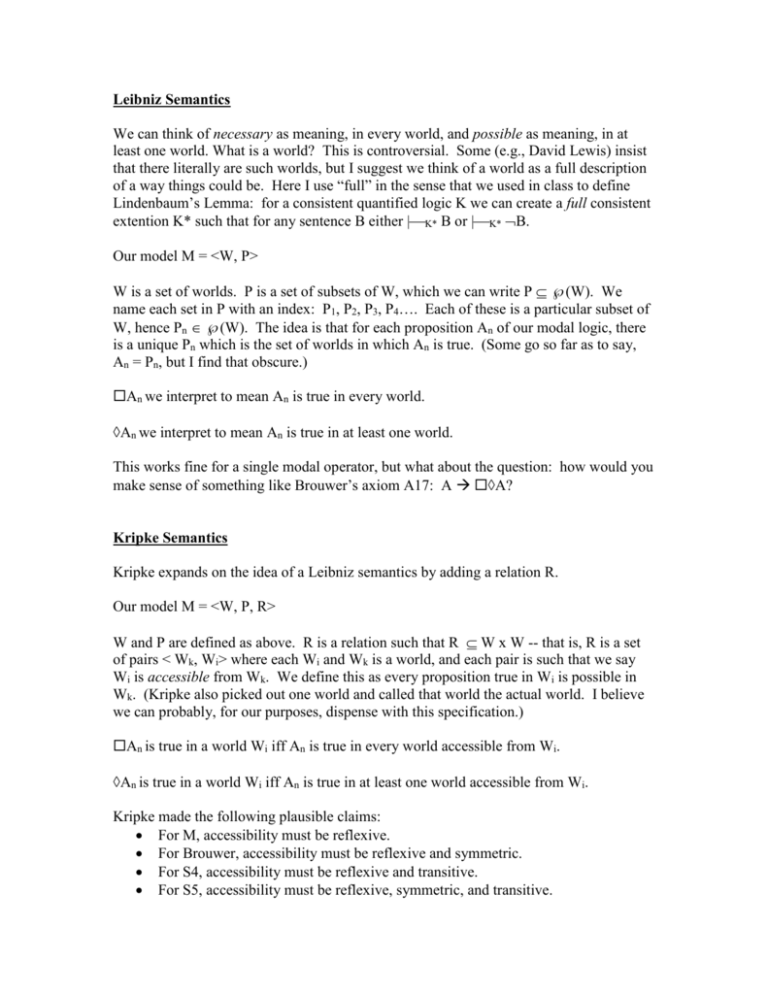
Leibniz Semantics We can think of necessary as meaning, in every world, and possible as meaning, in at least one world. What is a world? This is controversial. Some (e.g., David Lewis) insist that there literally are such worlds, but I suggest we think of a world as a full description of a way things could be. Here I use “full” in the sense that we used in class to define Lindenbaum’s Lemma: for a consistent quantified logic K we can create a full consistent extention K* such that for any sentence B either |K* B or |K* B. Our model M = <W, P> W is a set of worlds. P is a set of subsets of W, which we can write P (W). We name each set in P with an index: P1, P2, P3, P4…. Each of these is a particular subset of W, hence Pn (W). The idea is that for each proposition An of our modal logic, there is a unique Pn which is the set of worlds in which An is true. (Some go so far as to say, An = Pn, but I find that obscure.) An we interpret to mean An is true in every world. An we interpret to mean An is true in at least one world. This works fine for a single modal operator, but what about the question: how would you make sense of something like Brouwer’s axiom A17: A A? Kripke Semantics Kripke expands on the idea of a Leibniz semantics by adding a relation R. Our model M = <W, P, R> W and P are defined as above. R is a relation such that R W x W -- that is, R is a set of pairs < Wk, Wi> where each Wi and Wk is a world, and each pair is such that we say Wi is accessible from Wk. We define this as every proposition true in Wi is possible in Wk. (Kripke also picked out one world and called that world the actual world. I believe we can probably, for our purposes, dispense with this specification.) An is true in a world Wi iff An is true in every world accessible from Wi. An is true in a world Wi iff An is true in at least one world accessible from Wi. Kripke made the following plausible claims: For M, accessibility must be reflexive. For Brouwer, accessibility must be reflexive and symmetric. For S4, accessibility must be reflexive and transitive. For S5, accessibility must be reflexive, symmetric, and transitive. Time Other interpretations of and include using it to discuss time. Some had proposed that we read A to mean A is true now and will be throughout the (actual) future A to mean A is either true now or will be true at some time in the (actual) future. Kripke proposed an important alternative; we read A to mean A is true now and will be throughout all possible futures. A to mean A is either true now or will be true at some time in some possible future. The advantage of this interpretation is that it works with his model of S4. Think of accessibility as including in the future: Wi is accessible from Wk iff every proposition true in Wi is possible in Wk and Wi is at the same time as or in the future of Wk. We can also consider adding new operators P, F, and N, meaning Past, Future, and Now. These could potentially be combined with and interpreted modally (to mean neceassarily and possibly) so that we combine a temporal logic with an independent notion of modality. I can’t here tell you what the semantics of such a logic would be like -- we’ll have to keep that intuitive. Here’s an interesting example from Arthur Prior. He uses both ideas to recreate the argument that foreknowledge of the future means the future is fully determined; such a claim mattered to theological disputes where some both claimed that there existed an omniscient God that knew the entire future but also that we were free. I reconstruct it here in terms of our logic; the basic intuition is that the past is necessarily what it is, but then if in the past something is known to be true in the future, then it is necessary as a result. 1. 2. 3. 4. 5. 6. 7. 8. PA PA PFA PFA FA PFA FA PFA (PFA FA) (PFA FA) (PFA FA) PFA FA FA FA Premise Instance of 1 Premise Chain rule, 3, 2 Instance of A15 Premise MP, 6, 5 Chain rule, 4, 7 Prior notes that there’s an obvious mistake with line 6, but it can be corrected with time indexing. Deontic Logic We can also interpret to mean it should be the case that, and to mean it is permissible that. In such a case, we get what is called a deontic logic. This is a relatively undeveloped form of logic. The first known attempt at it may be around 1926 by Mally, a student of Meinong. Mally’s own system had some very implausible consequences; for example, the following was a theorem: A A Which seems to my understanding to complete dilute any notion of obligation, but he was willing to accept it. Following Follesdal and Hilpinen, we can identify a typical minimal deontic logic (that avoids the obvious mistakes of Mally’s logic) as including L along with the following axioms: A20 A21 A22 A A (A ^ B) (A ^ B) (P v ¬P) We define A as ¬¬A. I find A22 implausible. Plausible additional axioms include A18 and A23 A24 A A (A A) Prior proposed the following, but it has been widely denied: A ((A B) B)
